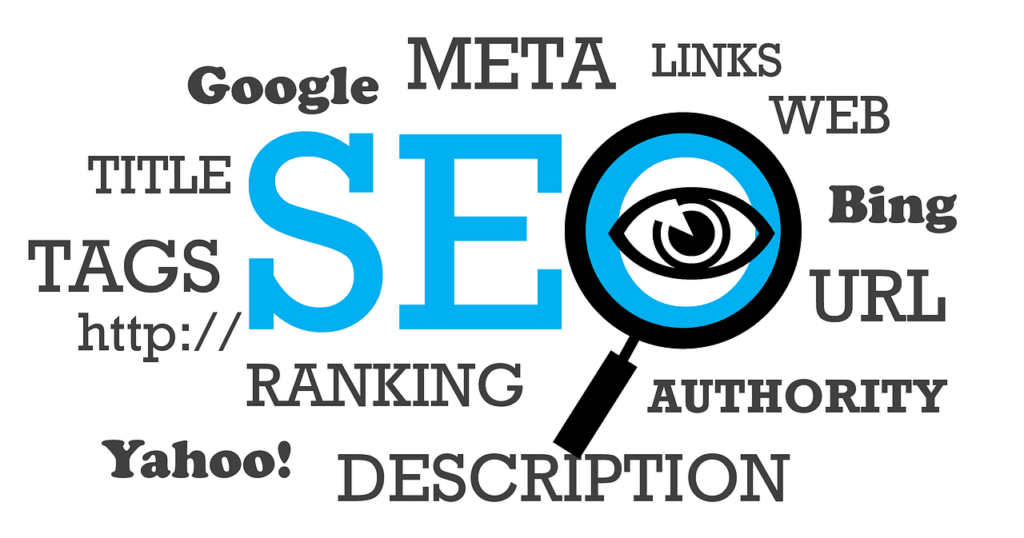11 Tips to Optimize Your Blog Posts for SEO
Many readers have asked us to share ideas on how to optimize blogs posts for SEO, so they can get better search rankings.
The best time to enhance your blog content for SEO is when you are creating it, but you can constantly go back and enhance your old articles as well.
Blog SEO is important because it helps you consistently get more traffic to your website. There are many things you can do to optimize your article for SEO.
In this short article, we will share our best blog site SEO tips to assist you optimize your blog posts for SEO like a pro. These are the tips that we utilize on our own blogs, which gets countless visitors from search engines.
1. Strategy Your Content with Proper Keyword Research
Many novices just use their finest guesses to write about subjects they feel that their users would have an interest in.

You don’t require to rely on blind guesses, especially when you can do keyword research to learn precisely what your users are searching for.
Keyword research study is a technique used by content creators and SEO experts. It assists you discover topics your users have an interest in based upon the online search engine information.
You can then utilize these keywords to plan your content strategy. This will guarantee that you blog about subjects that people are actually trying to find, and it’s a terrific method to discover new article concepts.
We recommend utilizing keyword research tools like SEMRush. They use thorough keyword data, competitors analysis, keyword position tracking, and tons of other useful features.
If you are using SEMRush, then you would wish to check out their SEO Writing Assistant tool. It helps you find LSI and related keywords, readability, language tone, and typical post length.

For detailed directions, see our short article on how to do keyword research for your post.
2. Discover Semantic Keywords for Your Focus Keyword
After you have done your keyword research and found keyword ideas, it is time to select one that has the greatest search volume and low competitors.
This will be your focus keyword. It is the search expression that your users are probably to try to find.
If you are utilizing the All in One SEO plugin, then you can set the focus keyword in your article’s SEO settings. This would enable you to see how effectively you have used it in your short article.
Next, you require to find out the Latent Semantic Indexing (LSI) keywords. These are the searches related to your focus keyword.
The simplest way to discover them is to just enter your focus keyword in Google Search and scroll down to the bottom of the outcomes.

There you’ll find them listed as ‘related searches’.
You need to incorporate as many of these keywords in your content, so you can have the most total material for users.
It’s extremely essential that you don’t try to pack them in your content. This would look odd to your users and search engines are pretty good at discovering keyword stuffing.
3. Compose an Effective Blog Post Title
The title of your article is extremely essential for search rankings.
An excellent article title makes your post more pertinent to the search inquiry. More importantly, it motivates users to actually click on your post when they see it in search results.
You can make your post title more SEO friendly by utilizing your focus keyword in the title.
Aside from adding your focus keyword, we also suggest making your headline catchy and click-worthy. That’s since click-through rate (CTR) plays a crucial role in SEO.
There are several formulas to compose efficient headings. The one that still works is called EMV or emotional marketing worth.
This formula advises utilizing power words that set off specific psychological actions in your audience.
If you are utilizing the MonsterInsights plugin, then it features a built-in headline analyzer tool that offers you a heading rating right inside the WordPress admin area. This also consists of real-time tips to enhance your title for greater click-through rates.
There are other online tools too that you can use like IsItWP Headline Analyzer which assists you compute your title’s EMV rating.
For more pointers, see this short article on headlines that went viral and how to copy their success in your own short articles.
4. Make Internal Linking a Habit
As soon as you have blogged for a while, you will have enough content that you would want users to check out.
With internal linking, you can send brand-new readers to check out your older relevant posts.
Internal linking is a fantastic way to develop a contextual relationship between your brand-new and old posts. It likewise permits you to pass appropriate link juice to your older short articles.
WordPress makes it simple to search for your old posts ideal inside the post editor. Merely select the text that you wish to link and after that click on the link button.
A text pop-up will appear below your selected words. You can begin typing to search for the older short articles that you want to connect here.
Making internal connecting a practice will make sure that your on-page SEO is excellent, and that your older articles continue to get brand-new links.
Related: See our thorough guide on how to include a link in WordPress.
Typically beginners make the mistake of doing 1-way internal linking where they link to older posts from brand-new articles.
You can and should also go back to modify older posts to link to your brand-new short articles for maximum benefits.
5. Include Images and Videos to Your Blog Posts
Search engines frequently rank appealing material higher in search results page. Images and videos are even more appealing than plain text.
You wish to make certain that your article include images in between paragraphs.
When including images, you want to be careful about image copyrights. Typically novices copy images from other websites to use on their site, and this can get you in legal trouble if you do so without correct approvals.
Do not stress, there are a lot of locations where you can find royalty complimentary images to use in your post. You can also use your own original photographs or utilize websites like Canva to produce appealing graphics.
Make certain that you optimize your images for SEO.
See our tutorial on how to optimize images for search engines for comprehensive guidelines.
Videos are much more appealing than images. You can transform your blog posts into videos by creating slideshows, vlogs, or experiment with other formats.
Nevertheless, you should never directly submit videos to your blog posts. WordPress is not optimized to serve videos, and your shared hosting service can’t handle them.
We suggest publishing your videos to YouTube. It is the 2nd most popular online search engine, and the second largest social networks platform right after Facebook.
6. Include a Meta Description to Your Blog Post
The meta description is an HTML meta tag that you can add to any page. Its purpose is to provide a brief description of your short article for search engines and other crawlers.
Some SEO specialists think that the meta description tag on a page has actually become irrelevant.
Nevertheless, lots of others would disagree. At Beal Marketing Group, we advise using the meta description for all of your posts.
An excellent meta description can discuss a lot more about a short article. Social network websites like Facebook, Twitter, and LinkedIn also show it when your short articles are shared on those platforms.
Given that now you know that individuals are going to be reading your meta descriptions, you want to make sure that it’s beneficial.
You also want to ensure that you at least discuss your focus keyword when in the meta description for search functions. The character limitation for Meta Description is 155 characters.
Try to remain within that limit or your meta description will be truncated after 155 characters. You likewise wish to make sure that you utilize the focus keyword previously in the meta description rather than later.
To add meta description, you require to scroll down to the AIOSEO meta box on your post modify screen.

7. Make Your Articles Easier to Read
Readability is an essential aspect thought about by online search engine. Articles that are simpler to check out frequently rank higher than short articles that are not user friendly.
Computer system and mobile screens are still not an ideal platform for reading.
This is why most users simply scan through posts. In truth, studies discovered that users invest less than a second to decide whether they wish to stay on a page or leave.
That’s a really brief time for you to persuade the user to remain and scroll through. By enhancing readability, you can make it possible for your users to quickly scan an article.
You can enhance readability by using much shorter sentences, smaller sized paragraphs, punctuation, headings, and bulleted lists. We suggest adding white area around text and use images to make your text appearance simpler on eyes.
If you are utilizing the All in One SEO plugin, then it will automatically evaluate readability concerns and make recommendations for you in the analysis section.
You can also utilize tools like Grammarly, which enables you to check grammar, punctuation, and spelling on the fly. It also offers tips to enhance the readability of your posts.
For more on this subject, see our article on how to enhance the readability rating of your blog posts.
8. Use Categories and Tags to Organize Content
Classifications and tags help you sort your content not just for yourself, but for the readers and online search engine.
The issue is that lots of WordPress novices frequently end up using them incorrectly.
If you think of your website as a book, then categories would be the tabulation and tags will be the index part of the book.
Categories are used to divide your material into significant topics gone over on your blog.
Tags, on the other hand, are the topics gone over in a private post.
To find out more, see our beginner’s guide on utilizing classifications and tags for optimum SEO benefit.
9. Objective to Be The Featured Snippet in The Search Result
Google has actually been attempting to respond to user questions as rapidly as possible. As part of this effort, they have presented the highlighted outcome or answer box.
This is the highlighted search result that appears on the top. Google creates a customized bit from the short article’s material highlighting the part that their algorithms think to be the answer of user’s question.
According to research study carried out by Advanced Web Ranking, Answer boxes safe and secure practically 32.3% CTR. This makes them tremendously essential for your SEO strategy.
There is no particular set of directions supplied by Google relating to how they would choose the featured bit.
Their recommendation is to improve your material and make certain that it uses the info users are seeking.
Nevertheless at Beal Marketing Group, we have actually developed useful ideas based upon our research that will help you appear in Google response boxes with your article.
10. Make Your Blog Posts Comprehensive
Search engines love posts that cover a topic with great detail. This is why we asked you to collect the semantically related keywords (LSI Keywords) as part of your material planning step.
These related keywords provide you a concept of different variations of user searches regarding that specific subject. By covering those keywords in your article, you would have the ability to make it more extensive, useful, and helpful.
You need to utilize headings and subheadings to consist of those keywords and attempt to cover as much ground as you could.
Aside from LSI keywords, another suggestion to create complete material is to type your wanted keyword and after that change to Image Search.
You will see topic bubbles with a variety of keywords.
We recommend including these when creating your content, so you can have the most extensive material.

11. Enhance Older Blog Posts
Many beginners tend to ignore a blog post after they have actually published it. In reality, you are refrained from doing optimizing your article for SEO once it is released.Promote it on social networks– Promote your blog post across your social networks profiles. You can even automate this task by using IFTTT to share your material. Include internal links– Once you have released a post, you can return to pertinent old posts and add a link to your brand-new post. This gives your brand-new articles link juice while likewise enabling users to discover it more easily. Track search rankings– You have optimized a post for SEO, however how do you track its search rankings? See our guide on how to track search rankings for your post for directions.
We advise optimizing old posts on a regular basis, so you can continue to enhance your rankings.
We hope this article helped you enhance your article knowledge for SEO to get more traffic. Required more pointers to promote your content? Contact us Today and we can do it for you.
If you liked this post, then please sign up for more content.


